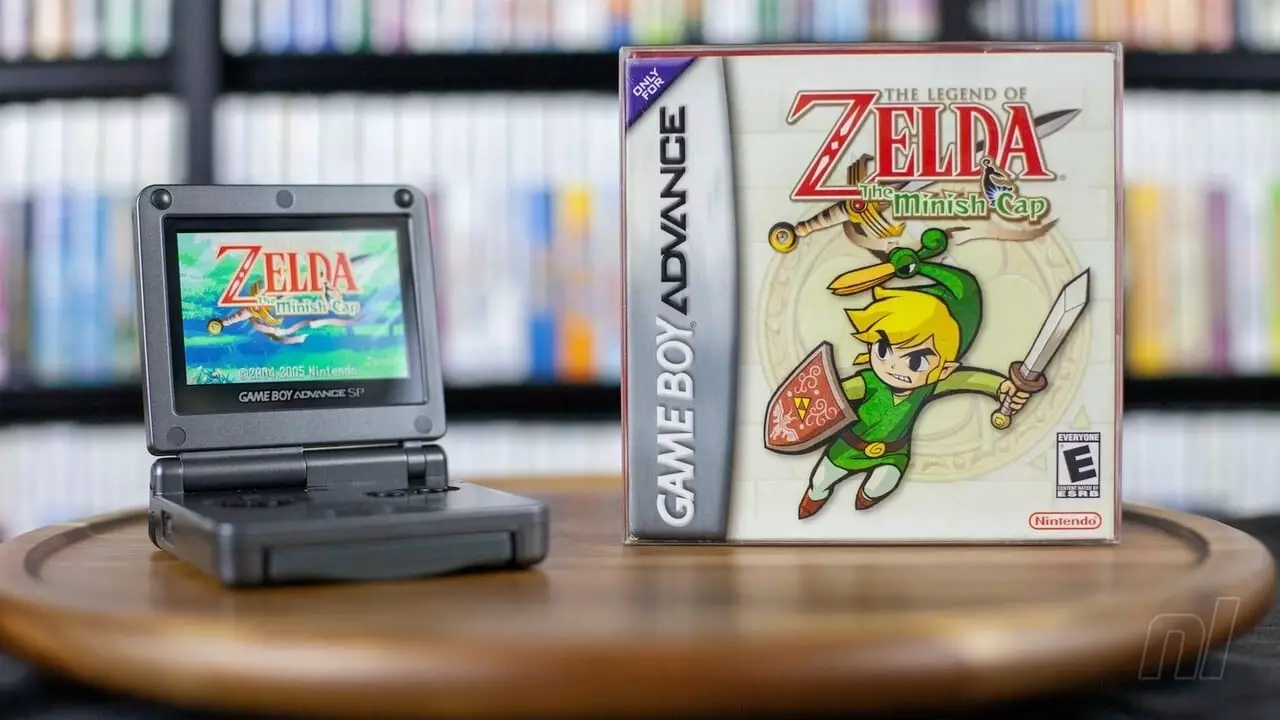As we reflect on the exciting journey of the iconic franchise that is The Legend of Zelda, it’s impossible not to mark moments of significance along the way. One such noteworthy occasion arises as we celebrate the 20th anniversary of *The Legend of Zelda: The Minish Cap*. This delightful title first graced challenging gamers in Japan on November 4, 2004, and quickly spread to North America and Europe, cementing its place in the hearts of Zelda enthusiasts worldwide. The Minish Cap represents not merely a game, but a unique intertwining of creativity, artistry, and nostalgia that continues to resonate strongly in players’ minds to this day.
Unlike other installments of the series predominantly handled by Nintendo, *The Minish Cap* was a collaborative effort from Capcom and Flagship, marking their third contribution to the franchise. It followed the critically laid groundwork of the Oracle series and the innovative *Four Swords* multiplayer experience. Under the direction of Hidemaro Fujibayashi, who would later play significant roles in various other Zelda titles, *The Minish Cap* unexpectedly introduced us to a quirky new mechanic and narrative style, setting it apart in an already diverse canon.
What truly captures the essence of *The Minish Cap* is its whimsical nature. Players are introduced to an unfamiliar scenario where Link, the game’s iconic protagonist, encounters a peculiar talking cap shaped like a bird. This unique accessory offers not only intriguing game mechanics but also hilarious interactions that break traditional narrative molds. While fellow Zelda games have explored serious themes, *The Minish Cap* revels in playful absurdity as it transports players between realities, shrinking down to explore a world teeming with life from the perspective of an acorn.
Delving deeper into the gameplay reveals a treasure trove of inventive ideas that elevate *The Minish Cap* above its contemporaries. Players engage with Kinstones, a mechanic requiring them to gather and match colorful stones to unlock new areas or rewards. Although some may argue these collectible elements can become tedious, they contribute to an overarching sense of exploration that defines the Zelda experience. The Minish Cap artfully balances challenging gameplay with accessible mechanics, inviting players into a vibrant and intricately crafted world.
Hurdles such as deciphering correspondences or completing tasks to progress serve primarily as enjoyable diversions rather than frustrating impediments. Furthermore, unlike modern titles that often hinge heavily on expansive open-world constructions, *The Minish Cap* presents a relatively concise experience, comprising six intricately designed dungeons that focus on engaging puzzles and unique bosses. This structure captures the essence of classic gaming experiences, reminding players of the joy found in straightforward storytelling and strategic gameplay.
Visually, *The Minish Cap* exhibits a delightful style reminiscent of its predecessor, *The Wind Waker*, while cleverly channeling it through a top-down perspective. The lush pixel art exquisitely captures the charm and vibrancy of the game world, creating an atmosphere that invites exploration and immerses players in its magical landscape. Additionally, the collaboration with composer Mitsuhiko Takano gives rise to an unforgettable soundtrack filled with memorable and catchy melodies that enhance the overall experience.
Given its unique eccentricities and delightful charm, *The Minish Cap* has steadily maintained a position on various fans’ top Zelda game lists for decades. Whether it’s through its availability on platforms such as the Wii U, 3DS, or even Nintendo Switch Online + Expansion Pack, this game continues to engage new players, ensuring that its impact transcends generational gaps.
A Fitting Tribute
In celebrating this beloved title, we reflect on what *The Minish Cap* meant for the Zelda franchise 20 years ago and continues to mean for today’s gamers. While it may not possess the groundbreaking mechanics or expansive narratives of its successors, its spirit, joy, and creativity resonate strongly with audiences, enabling it to stand tall among the illustrious Zelda lineup. As we look toward the future, it’s essential to honor the innovative charm that creators like Capcom and Flagship brought to the table, ensuring *The Minish Cap* stays fresh in our memories for years to come.


Leave a Reply